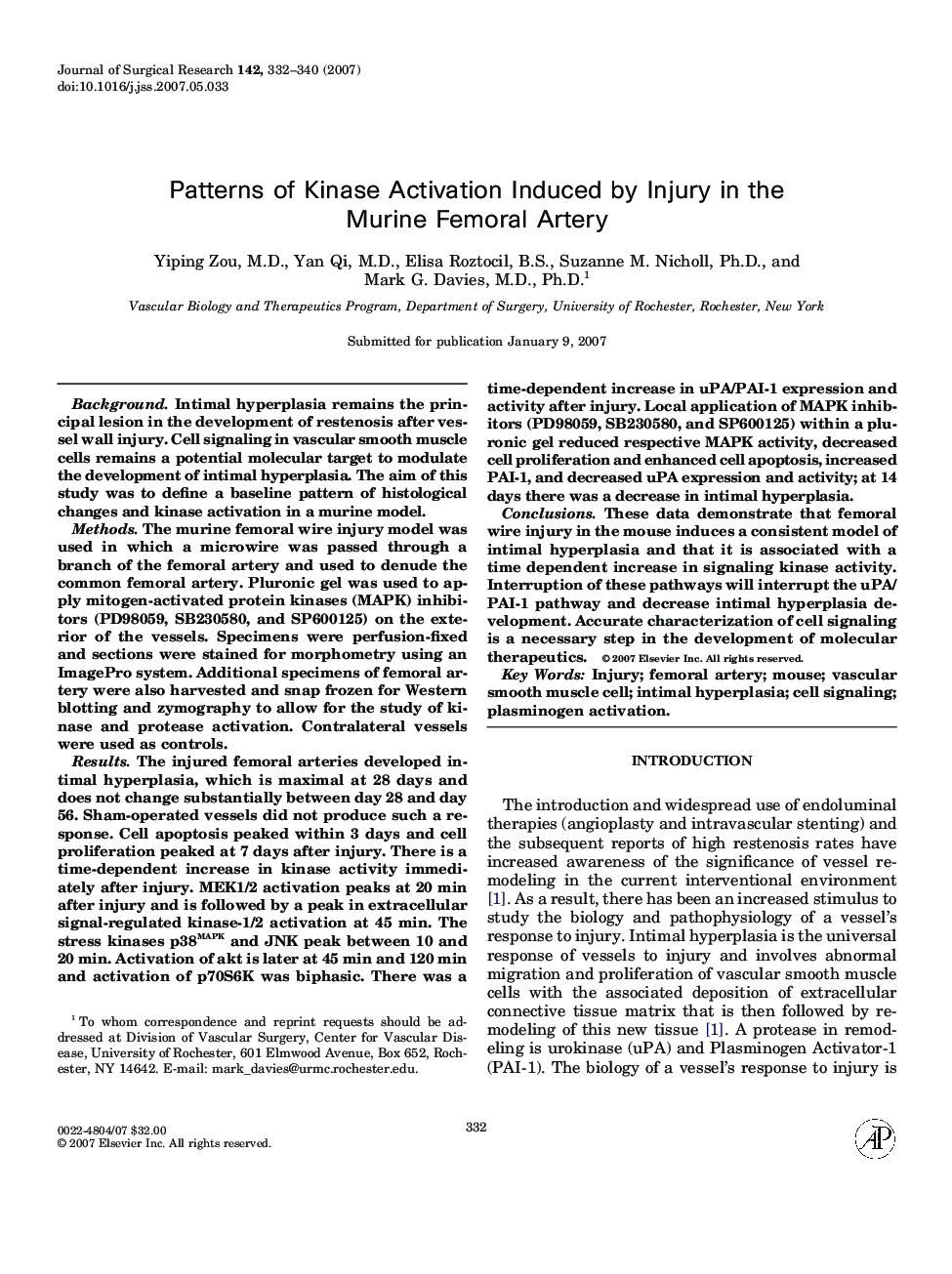| کد مقاله | کد نشریه | سال انتشار | مقاله انگلیسی | نسخه تمام متن |
|---|---|---|---|---|
| 4304691 | 1288511 | 2007 | 9 صفحه PDF | دانلود رایگان |

BackgroundIntimal hyperplasia remains the principal lesion in the development of restenosis after vessel wall injury. Cell signaling in vascular smooth muscle cells remains a potential molecular target to modulate the development of intimal hyperplasia. The aim of this study was to define a baseline pattern of histological changes and kinase activation in a murine model.MethodsThe murine femoral wire injury model was used in which a microwire was passed through a branch of the femoral artery and used to denude the common femoral artery. Pluronic gel was used to apply mitogen-activated protein kinases (MAPK) inhibitors (PD98059, SB230580, and SP600125) on the exterior of the vessels. Specimens were perfusion-fixed and sections were stained for morphometry using an ImagePro system. Additional specimens of femoral artery were also harvested and snap frozen for Western blotting and zymography to allow for the study of kinase and protease activation. Contralateral vessels were used as controls.ResultsThe injured femoral arteries developed intimal hyperplasia, which is maximal at 28 days and does not change substantially between day 28 and day 56. Sham-operated vessels did not produce such a response. Cell apoptosis peaked within 3 days and cell proliferation peaked at 7 days after injury. There is a time-dependent increase in kinase activity immediately after injury. MEK1/2 activation peaks at 20 min after injury and is followed by a peak in extracellular signal-regulated kinase-1/2 activation at 45 min. The stress kinases p38MAPK and JNK peak between 10 and 20 min. Activation of akt is later at 45 min and 120 min and activation of p70S6K was biphasic. There was a time-dependent increase in uPA/PAI-1 expression and activity after injury. Local application of MAPK inhibitors (PD98059, SB230580, and SP600125) within a pluronic gel reduced respective MAPK activity, decreased cell proliferation and enhanced cell apoptosis, increased PAI-1, and decreased uPA expression and activity; at 14 days there was a decrease in intimal hyperplasia.ConclusionsThese data demonstrate that femoral wire injury in the mouse induces a consistent model of intimal hyperplasia and that it is associated with a time dependent increase in signaling kinase activity. Interruption of these pathways will interrupt the uPA/PAI-1 pathway and decrease intimal hyperplasia development. Accurate characterization of cell signaling is a necessary step in the development of molecular therapeutics.
Journal: Journal of Surgical Research - Volume 142, Issue 2, October 2007, Pages 332–340